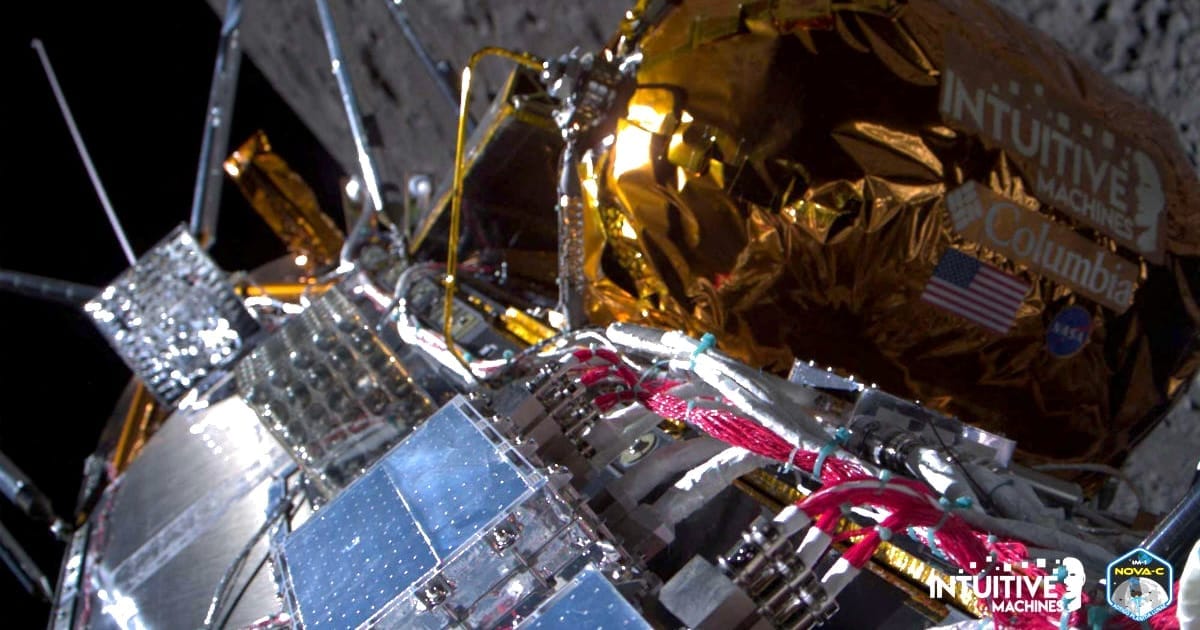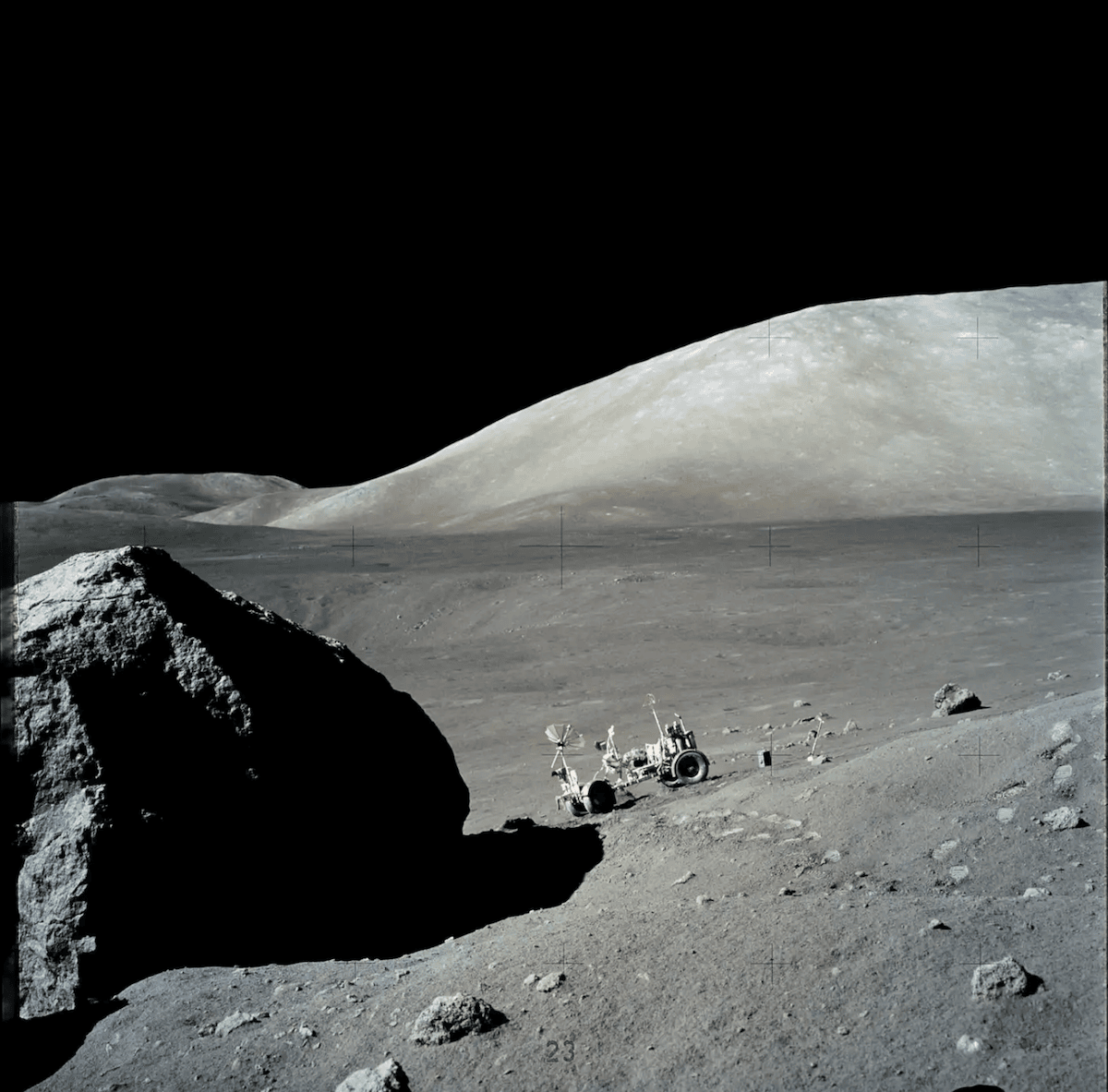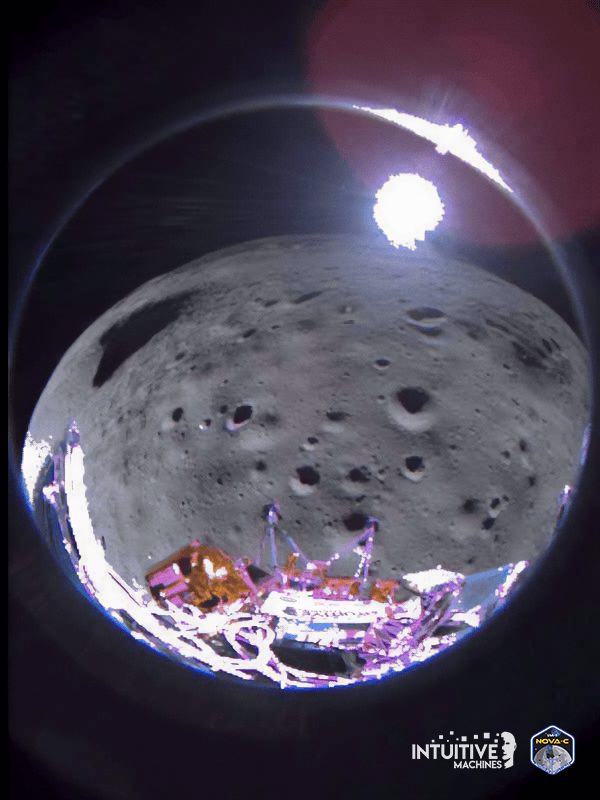
It’s hard to believe that the last one was more than 50 years ago.
In December 1972, a U.S. lunar lander belonging to the Apollo 17 mission successfully made it to the moon, along with astronauts Gene Cernan and Harrison Schmitt.
Apollo 17 Lunar Roving Vehicle (LRV) Circa 1972

It’s crazy isn’t it?
If we just think about what has happened since 1972, it doesn’t make much sense.
The U.S. has had, and still has, several successful missions to Mars. Both NASA’s Perseverance Rover and Curiosity Rover continue to roam the distant planet.
Even SpaceX was able to launch Elon Musk’s Tesla Roadster into space in 2018 — what a view.

For those curious, there’s even a website that tracks the Roadster. It’s about 61,857,000 miles from Earth in orbit around the sun traveling at 7,729 miles per hour.
How’s that for a fast car?
And the U.S. hadn’t returned to the moon?
Until now.
Just a few days ago, on February 22, Intuitive Machines (NASDAQ: LUNR) successfully landed its Odysseus lunar lander on the moon.
The landing site is near the Malapert A crater, about 300 kilometers from the lunar south pole.

We were prepared for this though, weren’t we?
In Outer Limits — It’s Time to Return to the Moon, we reviewed Astrobotic’s Peregrine Mission One, NASA’s Commercial Lunar Payload Services (CLPS) initiative, and the above mentioned Intuitive Machine’s Odysseus mission.
Unfortunately, Astrobotic’s mission didn’t make it to the moon. It got as far out to a distance equal to the lunar orbit…
But due to a propellant leak, it didn’t have the fuel to land on the moon. It had to return to Earth to meet a fiery end to its mission… as it burned up in Earth’s atmosphere.

Tech journalists were quick to question the viability of private company missions to the moon.
They went further to criticize NASA’s strategy of “relying on private entities” as a questionable way to advance space exploration.
They must be decels. And aside from their complete lack of understanding of the context of NASA’s CLPS initiative, they struggle to see the most obvious facts right in front of them.
SpaceX, a private company, has literally transformed the entire aerospace industry. It has enabled payloads to be launched to space for a tiny fraction of the cost of government-sponsored programs.
This is what makes Intuitive Machine’s success so fantastic. It is the first private company to successfully land on the moon.
No, it wasn’t perfect.
The mission was in jeopardy for a short window… when there were issues with the rangefinder lasers, which were necessary to affect a successful landing.
But the Intuitive engineering team patched the software in a way that enabled the lander to land.
The lander also pitched over, similar to how Japan’s SLIM spacecraft took a nosedive in the moon dirt recently (Outer Limits — The Resources Behind the Race to the Moon).
But despite that, Odysseus has been functioning and sending back data since the 22nd.
In other words, it’s doing its job.
But what’s even more important to understand here is what it cost to make it happen.
Outsourcing the spacecraft build and launch to Intuitive’s Odysseus mission cost NASA just $118 million.
I recognize that might sound like a lot of money to us. But what if we consider other recent government-run space exploration missions:
Intuitive Machines managed to deliver on a complex mission in a fraction of the time, and for a fraction of the costs of government-run missions.
And that’s precisely the point.
NASA could fund the equivalent of 24 missions like Intuitive Machines’… for the same amount spent on Mars Perseverance.
And the missions would happen in a fraction of the time, start to finish, than something that was managed in-house at NASA.
More bang for the buck. Faster, better, cheaper. E/ACC’s unite!
What’s next?
Intuitive Machines is already slated to return to the moon for a second mission as early as late this year.
This time, the payload will be an ice drill. And it is destined for the south polar region of the moon.
And readers of Outer Limits know what that means…
The race is on for water on the moon.
That water, in time, will be broken down into its constituent parts — hydrogen and oxygen…
Which will be used to make rocket fuel, thereby turning the moon into a waystation in space. It will also produce oxygen and purified water for life support.
Even more exciting is the third launch of SpaceX’s Starship. The Federal Aviation Administration (FAA) just closed its investigation of the Starship’s second flight, which clears the path for SpaceX’s third mission.
As regular readers know well, once Starship is commercialized, it will drop payload-to-orbit launch costs to just $100 per kilogram — another 90%+ decline from where launch costs are today on SpaceX’s Falcon 9 boosters.
And that’s all thanks to people in the private industry that think positive, tackle challenges, and are willing to push the outer limits of technology.
My kind of people.

New reader? Welcome to the Outer Limits with Jeff Brown. We encourage you to visit our FAQ, which you can access right here. You may also catch up on past issues right here in the Outer Limits archive.
If you have any questions, comments, or feedback, we always welcome them. We read every email and address the most common threads in the Friday AMA. Please write to us here.